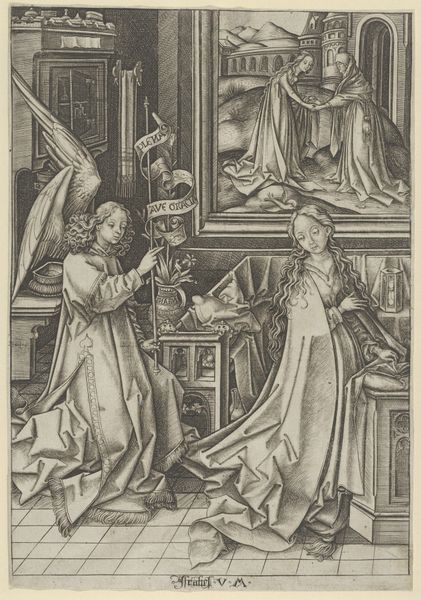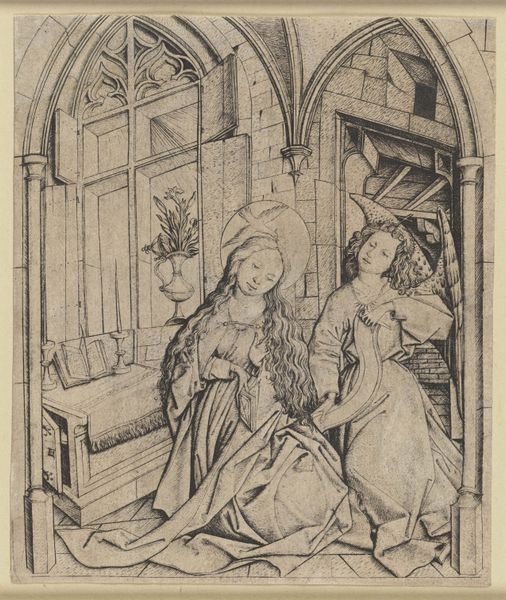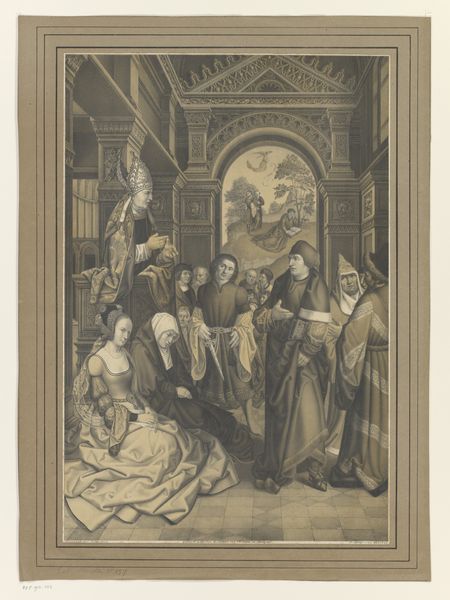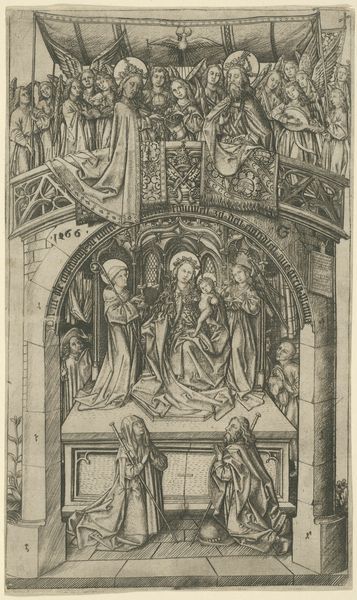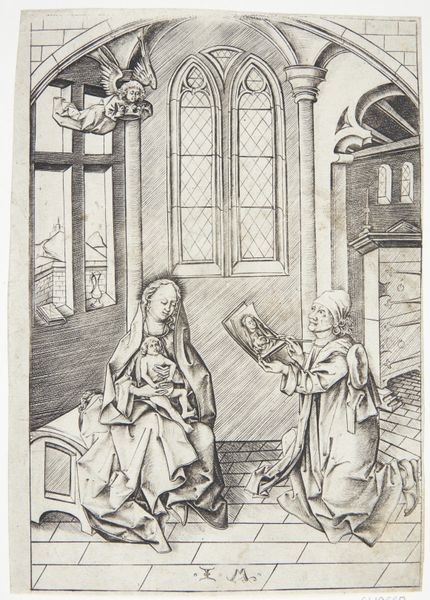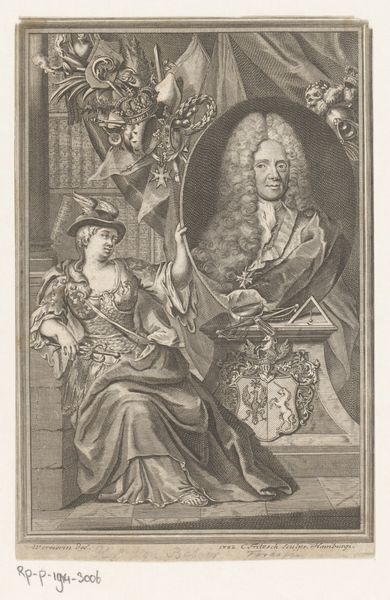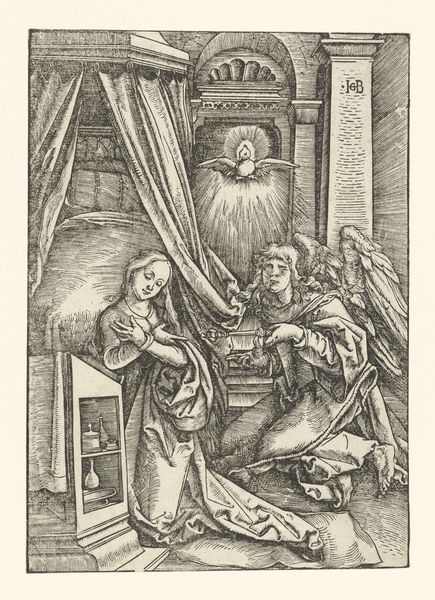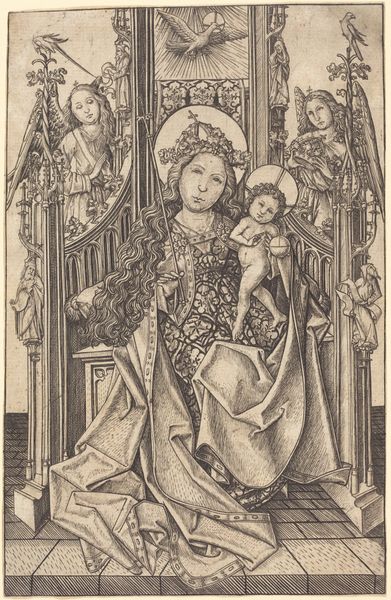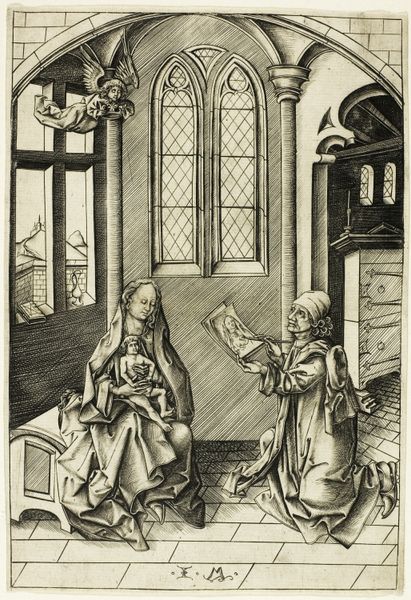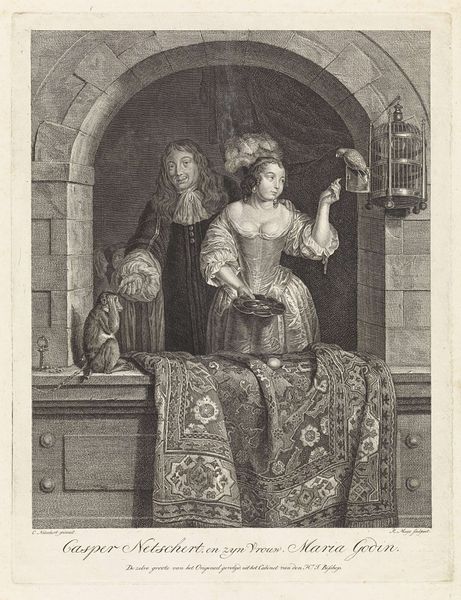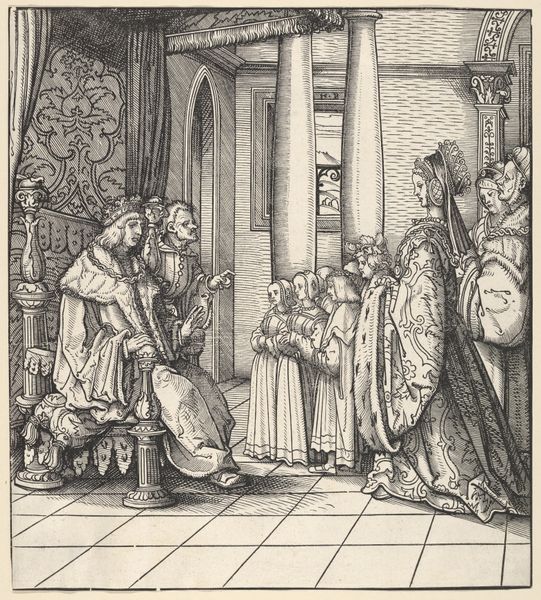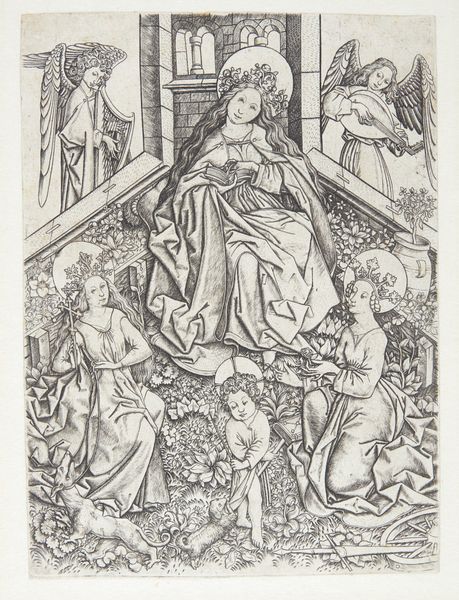
print, engraving
#
portrait
#
narrative-art
# print
#
figuration
#
romanticism
#
line
#
history-painting
#
engraving
Dimensions: height 568 mm, width 302 mm
Copyright: Rijks Museum: Open Domain
Johann Nepomuk Strixner created this Annunciation print sometime between the late 18th and mid-19th century, using a method called lithography. Lithography is a printmaking process, but unlike engraving, woodcut or etching, it is based on the simple idea that grease and water don't mix. The artist draws an image on a flat stone or metal plate with a greasy crayon, then applies water to the surface. The water is repelled by the greasy areas, but adheres to the bare stone. When an oily ink is rolled over the surface, it sticks only to the greasy image, which is then transferred to paper. The image can therefore be multiplied. Think of it: this was a means of mass production, and in its day, lithography democratized images, making art and information far more accessible. It created a new class of artisans who had never before had the ability to create art, and in the process challenged traditional notions of art production. Strixner's “Annunciation” is an example of the ways in which a new technology intersects with an old subject matter, to create something meaningful.
Comments
No comments
Be the first to comment and join the conversation on the ultimate creative platform.
